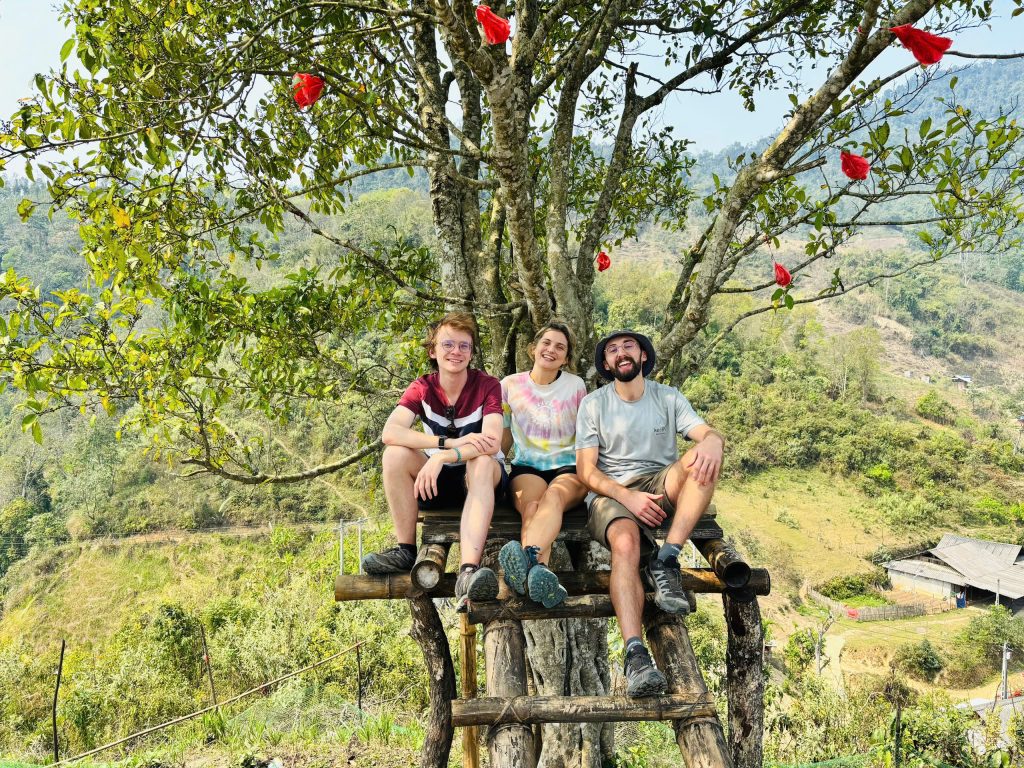A recent archaeological survey in Quang Khe Commune, Ba Be District, Bac Kan Province has revealed an important prehistoric site — Tham Un Cave. This remarkable discovery was made by the Bac Kan Provincial Museum in collaboration with leading archaeologists, adding a new chapter to the rich cultural heritage of Ba Be National Park.

An Enigmatic Cave with an Ancient Name
Tham Un Cave, whose name comes from the local Tày language, has been known to villagers for generations. However, its exact meaning remains a mystery, as no historical records or oral traditions have explained its origin.
The cave is a natural limestone formation with an arched entrance facing east-northeast, located about 20 meters above the base of the mountain. Nestled in a secluded valley surrounded by limestone cliffs, the cave overlooks a small valley.
In front of the cave flows a narrow stream running east to west. This stream merges near the end of Ban Pjạc Village with another watercourse from Hoang Tri Commune, eventually flowing into the Cho Leng River — one of the main waterways feeding Ba Be Lake, Vietnam’s largest natural freshwater lake.


Geographical and Archaeological Context
Tham Un Cave is situated about 2 km east (in a straight line) of Tham Thinh Cave, another archaeological site from the late Paleolithic period. At its entrance, a massive rock divides the cave into two sections:
- Eastern Chamber – About 200 m² in size, fully lit by natural daylight.
- Western Chamber – Approximately 100 m², extending deeper into the mountain along a north-south axis.
Scattered throughout the cave are large rock fragments and stalactite pieces, likely the result of geological changes over thousands of years.
Initial Survey Findings
During a surface survey, archaeologists collected:
- 02 fragments of coarse pottery
- 94 stone artifacts crafted mainly using flaking techniques
The survey also revealed signs of modern disturbance — a small part of the cave floor had been altered by livestock-keeping activities.
Excavation and Cultural Layers
The research team excavated a small 3 m² test pit in the center of the eastern chamber. The findings revealed a cultural layer about 0.8 meters thick, containing two distinct occupational phases:
- Early Cultural Layer –
- Located at the bottom, 0.60–0.65 meters thick
- Composed of compact, dark brown clay sediment
- Contained flaked stone tools, animal bones, and freshwater shell remains
- Dated to the late Bac Son Culture, approximately 6,000–5,000 years ago
- Later Cultural Layer –
- Uppermost section with looser, light gray sediment
- Contained fewer archaeological artifacts
- Believed to date to the Late Neolithic–Early Metal Age, around 4,000 years ago
Within the excavation pit, researchers identified four ancient hearths at varying depths. No burial remains were found.
Stone Tools and Other Artifacts
The excavation yielded an impressive 692 stone artifacts and eight coarse pottery shards. The stone tools are primarily flaked implements, including:
- Transverse-edged tools
- Longitudinal-edged tools
- Disc-shaped tools
- Oval-shaped implements
- Projectile points
- Multi-edged tools
- Flake fragments
- Flake tools with grinding marks
- Grinding stones and pounding implements




These tools demonstrate a range of functions — from hunting and processing food to crafting other tools — giving us insight into the daily life of prehistoric inhabitants.
Expert Interpretation
According to Assoc. Prof. Dr. Trinh Nang Chung, a leading expert on the project:
“Based on the overall analysis of artifacts, sediment layers, and dating evidence, we believe Tham Un Cave was inhabited by multiple generations of prehistoric people. The earliest occupation belongs to the late Bac Son Culture, around 6,000 to 5,000 years ago, while the later inhabitants lived here about 4,000 years ago during the Late Neolithic–Early Metal Age.”
This finding not only confirms the presence of early human settlement in Ba Be but also helps map out the cultural transitions between prehistoric periods in Northern Vietnam.
Cultural and Tourism Significance
The discovery of Tham Un Cave enriches the archaeological map of Bac Kan Province and highlights Ba Be National Park as more than just a destination for natural beauty — it is also a cradle of human history.








For visitors to Ba Be, the area already offers stunning landscapes, boat trips on Ba Be Lake, trekking through primeval forests, and exploring other caves like Puong Cave. In the future, with further research and preservation, Tham Un Cave could become an exciting addition to cultural tourism routes, allowing travelers to connect with the deep past of this unique region.

